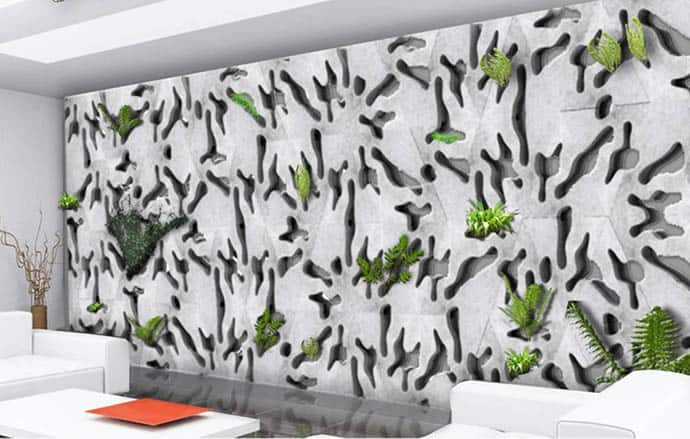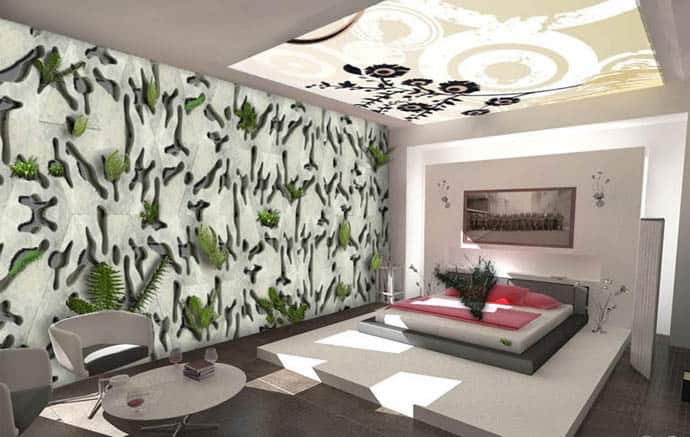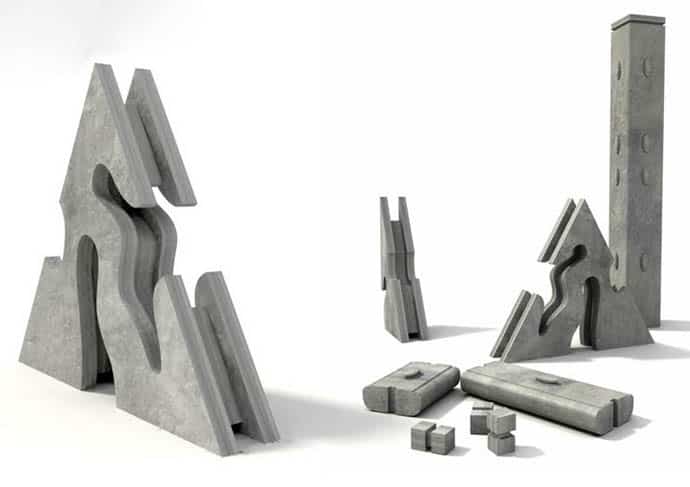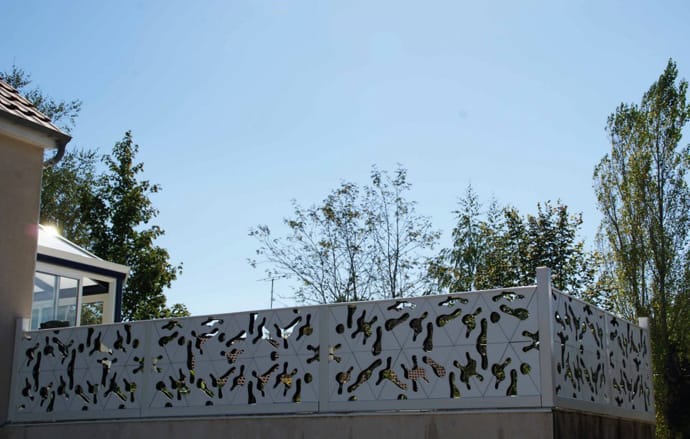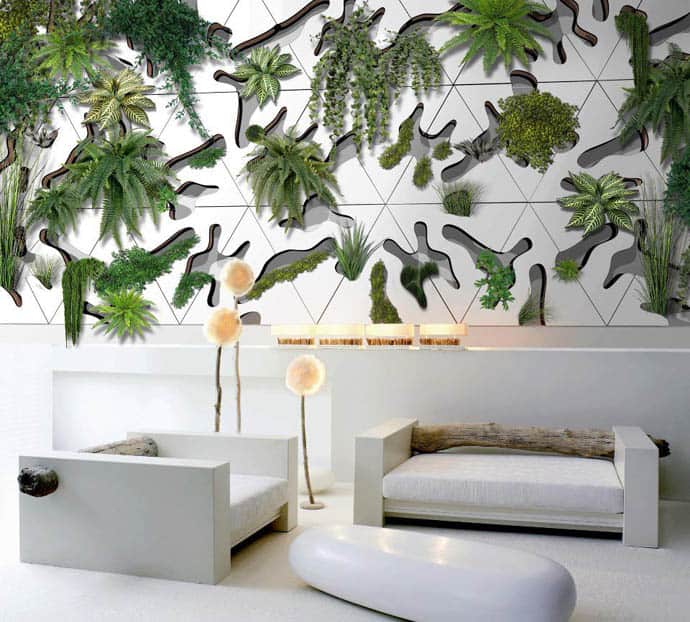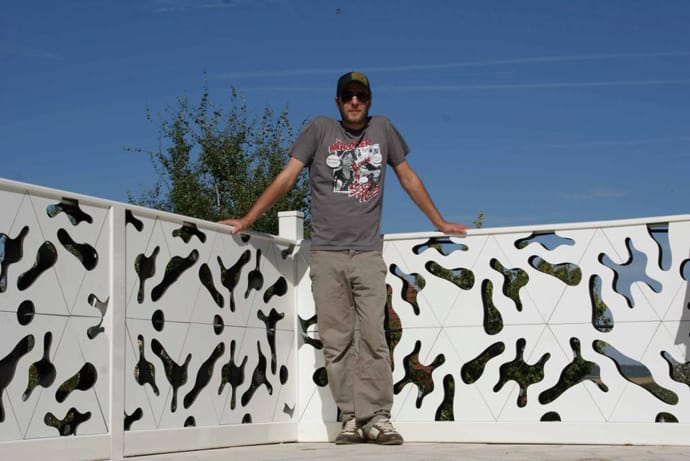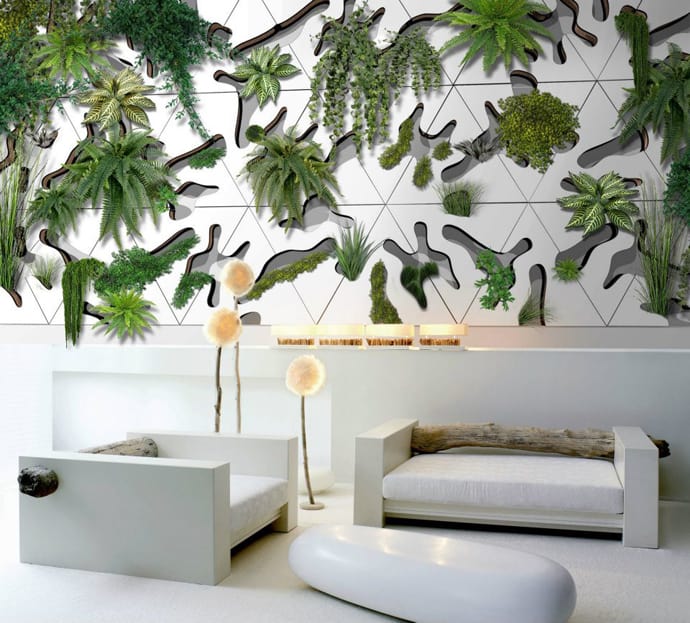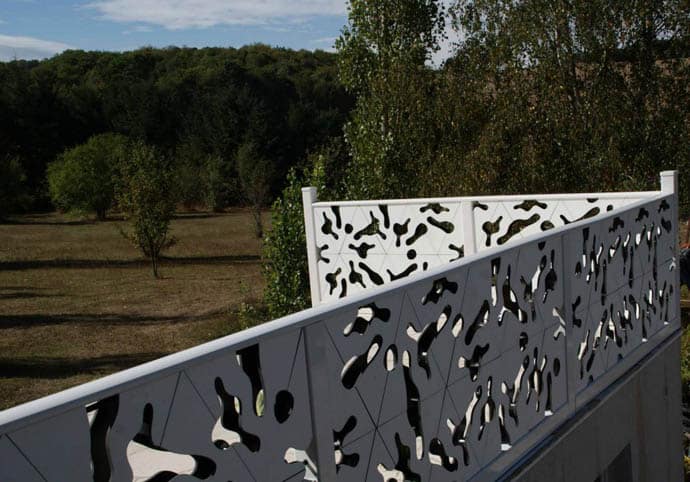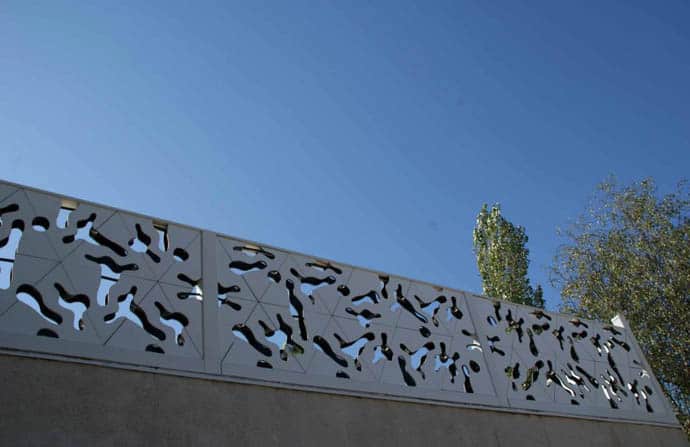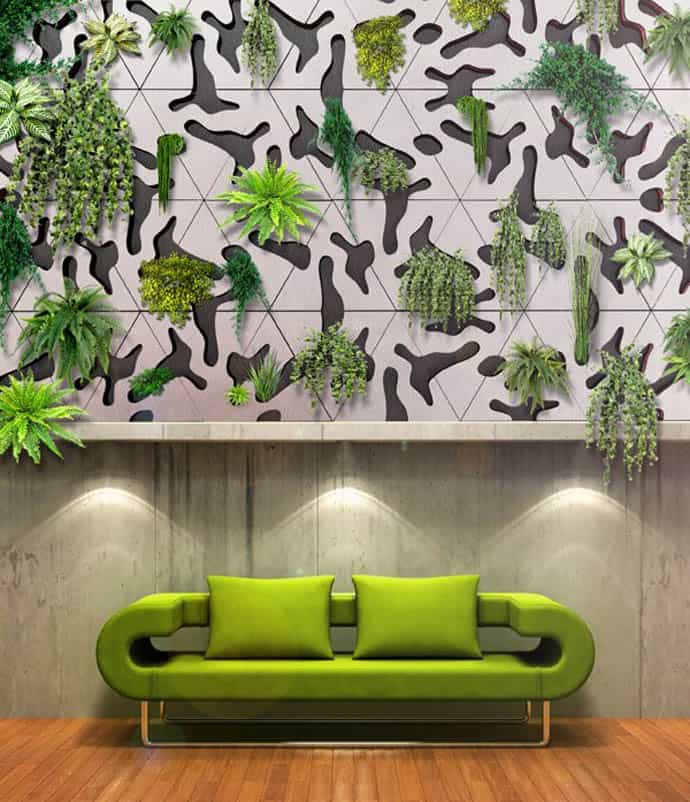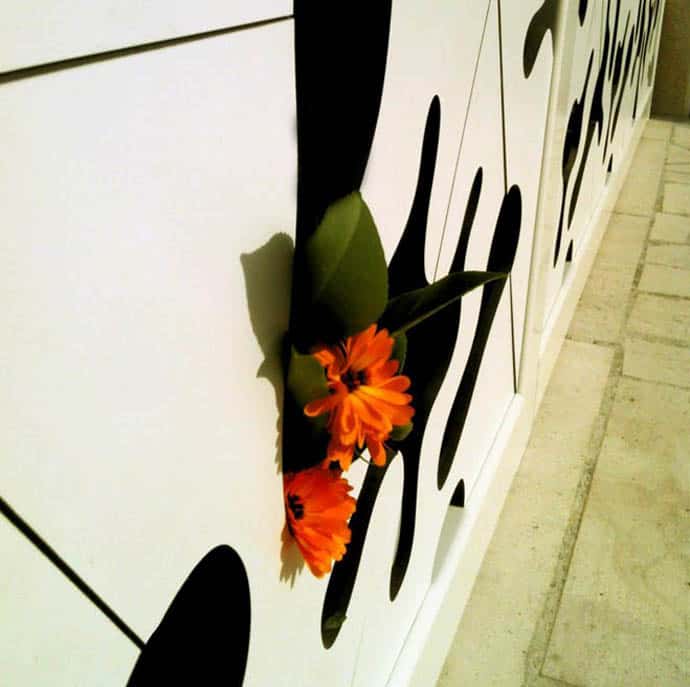Nature displays them all over the world, these vegetal walls. In Europe on houses covered with beautiful ivy or Virginia creeper at all seasons, or in the Tropics with those amazing cliffs covered with ferns, carnivorous plants, and all sorts of prolific vines. Today, thanks to the French designer Benjamin Pawlica a vegetal wall can become an accessory of your living room too. He found a solution and created “Deltaflore“, a green wall with unique, atypical forms. The system is represented by triangular bricks that can combine in different positions. Able to create entire walls or small screens, the concrete modules integrate both inside and outside. Irrigated, plants will thrive in openings reserved for them, thus creating games of light and shadow with the elements and providing a poetic atmosphere. In exterior or interior architecture, public buildings or private homes, “Deltaflore” vegetal wall is a source of pleasure and wonder for all.
Would you like a green wall in your living room, or maybe one at your office to refresh the atmosphere? French designer Benjamin Pawlica found a solution and created “Deltaflore“, a green wall with unique, atypical forms.
In exterior or interior architecture, public buildings or private homes, “Deltaflore” vegetal wall is a source of pleasure and wonder for all.
The concept of the green wall dates back to 600 BC with the Hanging Gardens of Babylon.
The vegetation for a green façade is always attached on outside walls.
There are two main categories of green walls: green façades and living walls. Green façades are made up of climbing plants either growing directly on a wall or, more recently, specially designed supporting structures. The plant shoot system grows up the side of the building while being rooted in the ground. With a living wall the modular panels are often made of stainless steel containers, geotextiles, irrigation systems, a growing medium and vegetation.

